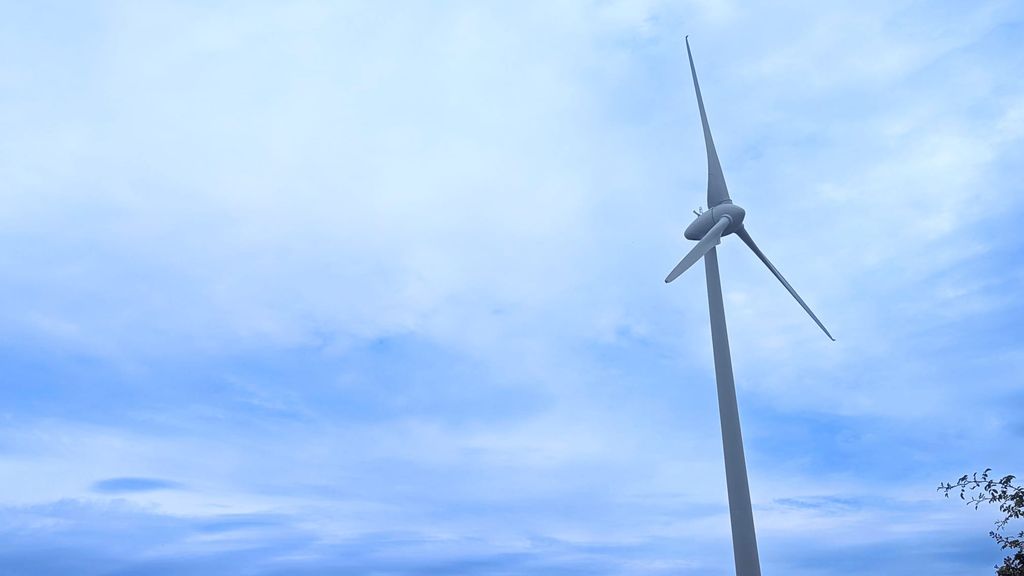With constant pressure for a sustainable energy system and to reduce the dependence on fossil fuel, wind turbines are becoming increasingly popular to reduce carbon footprints and save on energy costs.
But is it worth it to have one at home?

Who Can Benefit From Installing Wind Turbines?
Anyone looking for an environmentally friendly way to generate electricity can benefit from installing wind turbines. Residential homes, businesses, and farms can all use wind turbines to generate power, and the turbines can be used in conjunction with solar panels to create a renewable energy system.
Wind energy systems are most effective in locations with strong, consistent winds, so checking the local wind conditions before investing in a turbine is essential.
How Much Does It Cost to Install a Small Wind Turbine?
The cost of installing an eolic energy system will vary depending on the size and power output. On average, installing a small wind turbine will cost between $3,000 and $5,000. Installing a large one can range from $10,000 to $50,000. The cost of installing will also depend on the type of foundation, the local legislation and other factors.
What Should I Look for When Buying a Wind Turbine?
- Size
- Efficiency
- Wind resources
- Where to locate the turbine
- Costs
- Maintenance
- Noise
- Esthetic and possible wildlife disruption
- Planning permissions and limitations
How Big and Tall Is a Domestic Wind Turbine?

A domestic turbine typically stands between 80 and 100 feet tall. The height of the turbine’s tower depends on the size and power. The blades are usually about 20 feet long.
The average residential wind turbine may vary in rotor size and the size of the blades. A typical residential turbine has a rotor diameter ranging from 4 feet to 50-70 feet long. The more powerful are usually bigger, more expensive, and require a more extensive area.
How Many kWh Do You Need to Run a House?
Start your investigation into the efficiency of a wind turbine in relation to how much energy you need annually or monthly to power your house.
The answer to that question depends on several factors, including the home’s size, the area’s climate, the appliances’ efficiency, and the level of house insulation. But according to the U.S. Energy Information Administration, the average U.S. home uses about 914 kilowatt-hours (kWh) of electricity per month.
That means the average U.S. home uses about 30 kWh of electricity daily. But that’s just an average; your actual usage will depend on many factors.
How Many kWh does a Home Wind Turbine Produce?
The are many domestic wind energy systems on the market. However, the actual performance of turbines can be very different from what is advertised. It is always a good idea to look at the maximum output power generator (which is strictly related to the wind condition). Usually, the maximum power output of pole-mounted turbines ranges from 2kW to 6kW. Building-mounted turbines can usually generate 0.5kW to 2kW of energy.
Consulting a professional installer is the best way to determine the energy you need from your wind system to power your home and how to connect it to your electrical system. But to get the most out of your investment, you’ll need to consider your home’s energy usage, average wind speed, and tower height.
How do I Know if I Have Enough Wind?
The most important information you need to assess the viability of having a wind turbine as a renewable energy source in your property is, arguably, the wind measurement of your area.
It would help if you considered the following:
- The annual average speed: Is One of the most important factors to consider. Areas with an annual average wind speed of 5 m/s or more would be optimal. However, a reduced size wind turbine may not justify the investment even with that level of speed. If the average rate is too low, the turbine won’t generate enough power to be worth the investment.
- The direction of the wind: You want a location with consistent winds from one or more directions for optimal results.
- The turbulence of the wind: Turbulent winds can damage turbines, so it’s crucial to find a location with relatively constant but calm winds.
What Type of Home Wind Turbines Exists? Which Is Better?
1. Pole-mounted turbines: They are a type of turbine that is mounted on a pole. They can be used to power homes or businesses and can be used to generate electricity for the grid or use battery storage. They are often used in rural areas with plenty of space and wind.
2. Building-mounted wind turbines: Easy to install and maintain and can be used in urban and rural areas. They can be mounted on the roof of a building and come in various sizes to suit your needs. They are relatively cheaper than pole-mounted, but they are also believed to be less efficient.
Where to Install a Wind Turbine? Can I Put One on My Roof?
The answer is yes; you can put a small wind turbine on your roof. However, there are a few things you need to take into account before doing so:
- You must ensure that your roof is strong enough to support the weight.
- You need to ensure that the turbine can generate enough power for your needs.
- You need to check with your local authorities to see if there are any regulations or restrictions regarding installing wind turbines on roofs.
Which Is Cheaper, Solar or Wind Power?
As the world moves more and more towards renewable energy, the question of which is cheaper – solar or wind power – becomes more relevant.
So, which is cheaper – solar or wind power? The answer depends on several factors, including the location of the installation, the size of the installation, and the type of technology used. It is only possible to answer this question depending on the circumstances and factors involved.
Are Mini Wind Turbines Any Good?
Mini wind turbines are becoming increasingly popular, but there need to be more studies about whether or not they are effective.
Some argue that they are ineffective because they need to generate more power to be worth the investment. Others say that mini wind turbines can be effective if they are used with other renewable energy sources, such as solar panels, or just to offset some of the energy usages.
Can Wind Turbines Get Struck by Lightning?
Lightning strikes to wind turbines are not uncommon and can cause potential damage. In some cases, the damage can be so severe that the turbine needs to be replaced. Lightning strikes can also cause fires, posing an extreme safety risk.
Several measures can be taken to reduce the risk of damage from lightning strikes, including installing lightning rods and surge protectors. However, even with these precautions, there are still risks of strikes by lightning.
Are Wind Turbines Expensive to Maintain?
Wind turbines require constant maintenance and repairs. Their annual maintenance cost varies but may be at 2% of the initial investment yearly.
Conclusions
In conclusion, wind turbines are an excellent way to save energy and use renewable sources. They are easy to install and maintain and can help you save money on your energy bill.
However, if you are considering installing a wind turbine, research and consult a professional to ensure that it is the right choice for your circumstances and compare the investment with other energy sources.



